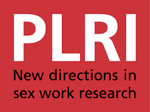- Proposal to European Parliament recommending the Swedish Model – 2014
Mary Honeyball, Labour’s Spokesperson on the European Parliament’s Women’s Rights and Gender Equality Committee, has been a vocal supporter of anti-sex work legislation and has written a report to the European Parliament recommending the Swedish Model, which criminalises the purchase of sex. In a blog leading up to the discussion Alex Bryce and other prominent service providers in the UK condemn the move and encourage the Parliament to listen to sex workers.
- Estimating the Number of Male Sex Workers with the Capture-Re-capture Technique in Nigeria – 2014
Estimating the size of populations most affected by HIV such as men who have sex with men (MSM) though crucial for structuring responses to the epidemic presents significant challenges, especially in a developing society. Using capture-recapture methodology, the size of MSM-SW in Nigeria was estimated in three major cities (Lagos, Kano and Port Harcourt) between July and December 2009. Following interviews with key informants, locations and times when MSM-SW were available to male clients were mapped and designated as “hotspots”.
- PLRI WEBSITE NEWS – 2014
The PLRI website was established in 2010 with limited funding which was not sustained so updates were intermittent after 2012. The good news is that important work of maintaining the website will resume in 2014 thanks to a team of independent volunteers.
Nothing without us !
- Enumeration of Sex Workers in the Central Business District of Nairobi, Kenya – 2013
Accurate program planning for populations most at risk for HIV/STI acquisition requires knowledge of the size and location where these populations can best be reached. To obtain this information for sex workers operating at 137 hotspots in the central business district (CBD) in Nairobi, Kenya, we utilized a combined mapping and capture-recapture enumeration exercise. The majority of identified hotspots in this study were bars.
- Common Prostitutes and Ordinary Citizens: Commercial Sex in London, 1885-1960 – 2012
- MARKET MORALITIES IN THE FIELD OF COMMERCIAL SEX – 2012
The website ‘Punternet’ contains customer service reviews (‘field reports’) of commercial sex encounters in the UK’s indoor sex market. Treating Punternet as a calculative device shows how ordinary understandings of morality underpin consumer markets, as field reports qualify commercial sex to produce understandings of ‘good value’.
- MARKET MORALITIES IN THE FIELD OF COMMERCIAL SEX – 2012
The website ‘Punternet’ contains customer service reviews (‘field reports’) of commercial sex encounters in the UK’s indoor sex market. Treating Punternet as a calculative device shows how ordinary understandings of morality underpin consumer markets, as field reports qualify commercial sex to produce understandings of ‘good value’.
- Study protocol for the recruitment of female sex workers and their non-commercial partners into couple-based HIV research – 2012
Researchers are increasingly recognizing the importance of addressing HIV risk within the context of intimate relationships rather than solely focusing on individual behaviors. A growing body of evidence suggests that couple-based interventions may be more efficacious than individual-based interventions in promoting safer sex behaviors and reducing drug use.
- The feasibility of using mobile phone technology for sexual behaviour research in a population vulnerable to HIV: a prospective survey with female sex workers in South India – 2012
An article in AIDS Care.
Sexual behaviour studies are often challenged by sampling, participation and measurement biases, and may be unacceptable to participants. We invited 293 randomly selected female sex workers (FSWs) in Bangalore, India, to participate in a telephone survey, with condom breakage as the main outcome. Free cell phones were supplied and trained interviewers telephoned FSWs daily to ask about all sex acts the previous day.
- Treatment as Prevention: How might the game change for sex workers? – 2011
“What drives continued expansion of the pandemic is not the absence of effective preventative technologies but discrimination, exploitation and repression of certain social groups,” Dr Peter Piot.
This article looks at the potential impact of partially effective, non contraceptive HIV prevention methods on sex workers in the light of recent news that anti-retroviral treatment (ART) by people with HIV substantially protects their HIV-uninfected sexual partners from acquiring HIV infection, with a 96 percent reduction in risk of HIV transmission.
Tweets
Follow us @PLRI
Court-based research: collaborating with the justice system to enhance STI services for vulnerable women in the US http://t.co/3vEaFQVO
The fractal queerness of non-heteronormative migrant #sexworkers in the UK by Nick Mae http://t.co/X7oGFeDI
‘only 31% of the sample of indirect sex workers reported having been engaged in commercial sex in the last 12 months’
Old but good. Violence and Exposure to HIV among #sexworkers in Phnom Penh http://t.co/rkrRGiBa
Someone is Wrong on the Internet: #sex workers’ access to accurate information

